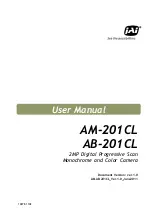
70
Operating Instructions
13 Configuring the network settings [Network]
–
When the unit is accessed using the HTTPS protocol, the number of users that can access the unit may
be reduced. The maximum number of concurrent access user varies depending on the maximum image
size and transmission format.
13.3 Access the unit using the HTTPS protocol
1.
Start up the web browser.
2.
Enter the IP address of the unit in the address box of the browser.
Example of entry:
https://192.168.0.10/
IMPORTANT
When the HTTPS port number is changed from
“443”, enter “https://IP address of the unit + : (colon) + port
number” in the address box of the browser. (
Example:
https://192.168.0.11:61443)
When the unit is in a local network, configure the proxy server setting of the web browser (under [Internet
Options...] under [Tools] of the menu bar) to bypass the proxy server for the local address.
3.
Press the [Enter] key on the keyboard.
The “Live” page will be displayed.
When the security alert window is displayed, install the security certificate. (section 13.3) Whe
n “On” is
selected for “User auth.”, the authentication window will be displayed before displaying live images for
the user name and password entries.
IMPORTANT
When the unit is accessed using the HTTPS protocol, the refresh interval and frame rate of images may be
lower.
13.3.1 Install the security certificate
When the security certificate of the unit to access is not installed on the PC, the security alert window will be
displayed each time the unit is accessed using the HTTPS protocol. To have the security alert window not
displayed, it is necessary to install the security certificate in the following procedure. If the certificate is not
installed, the alert window will be displayed each time the unit is accessed.
Note
The security certificate is
installed on the PC with the information registered for “Common Name”.
Therefore, the information registered for
“Common Name” must be same as the address or host name for
the unit access. If the certificate is not the same, the security alert window will be displayed each time the
unit is accessed.
When the address or host name of the unit is changed, the security alert window will be displayed each time
the unit is accessed even if the security certificate is installed. Install the security certificate again.
When the unit access is open to the Internet, enter the address name or host name to access via the
Internet for “Common Name”. In this case, the security alert window will be displayed each time the unit is
locally accessed, even if the security certificate is installed.
When the security certificate is properly installed, a key icon is displayed in the address box of the web
browser that has accessed the unit. (When using Internet Explorer 7, Internet Explorer 8, or Internet
Explorer 9)
When using Internet Explorer 7, Internet Explorer 8, or Internet Explorer 9
When using Internet Explorer 7 or Internet Explorer 8 with Windows XP, note that some of the displayed
windows may differ from the following descriptions.
1.
Access the unit using the HTTPS protocol.
2.
When the security alert window is displayed, click “Continue to this website (not recommended).”
















































